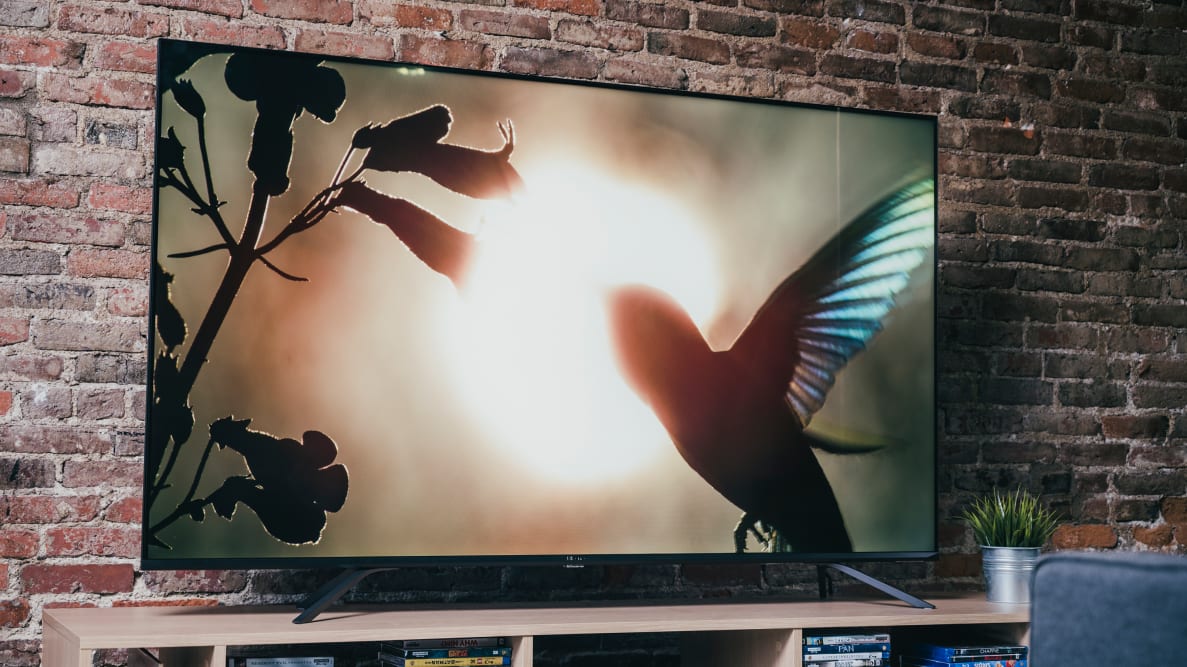Pros
-
Very bright
-
Great color production
-
Tons of value
Cons
-
No eARC, VRR, or ALLM
-
Outclassed by its direct competitors
We love the H8G’s steady, reliable performance for nearly every type of content, and feel that most people will appreciate its flexible smart platform. That said, the TV lacks some of the features we loved about the TCL 6-Series, which is arguably the H8G’s main competitor. Interestingly enough, though, when compared to the Hisense H9G (Hisense’s flagship TV for 2020), the H8G is good enough to make it a more attractive option once you factor in their respective price tags.
All told, the Hisense H8G is a good TV, but a peculiar one, too. As such, it struggles to carve out a place for itself amidst fierce competition.
Editor's note: Due to COVID-19 complications, this review leans heavily on test results in lieu of hands-on time with the TV.
About the Hisense H8G
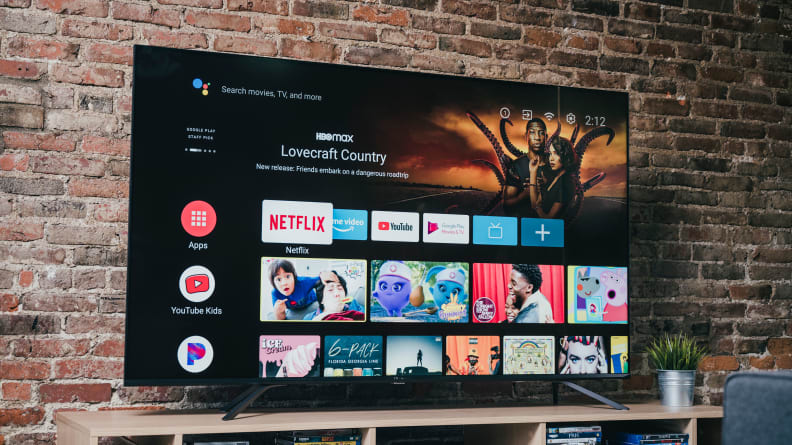
The H8G comes with an Android-based smart platform built right in. It's not our favorite platform, but it does offer flexibility.
There are four sizes in the Hisense H8G series and they range from 50 inches all the way up to 75 inches. The variant we've tested is the 65-inch model, which we received on loan from Hisense.
Here's how each of the sizes in the Hisense H8G series shake out in terms of pricing:
- 50-inch (Hisense 50H8G), MSRP $399.99
- 55-inch (Hisense 55H8G), MSRP $599.99
- 65-inch (Hisense 65H8G), MSRP $799.99 (90 local dimming zones)
- 75-inch (Hisense 75H8G), MSRP $1,299.99 (90 local dimming zones)
Different sizes of TVs in a series tend to perform very similarly to one another, so we don't expect there to be major differences between the 50-, 55-, 65-, and 75-inch variants of the H8G.
One thing to keep in mind, however, is the difference in local dimming zone count. Generally speaking, more local dimming zones are favorable, as they allow for tighter contrast control.
Hisense reports that the H8G series features “up to 90” local dimming zones and we know that this figure applies to both the 65- and 75-inch models. It is likely that the 55- and 50- inch variants of the Hisense H8G feature less than 90 zones, though we’ve yet to confirm how many zones are featured in these two sizes. We will update this review once we receive more information.
Here's a rundown of some of the H8G’s key hardware and features shared by all sizes in the series:
- Resolution: 4K (3,840 x 2,160)
- Display type: VA LED panel enhanced with quantum dots
- Local dimming: Full-array local dimming
- HDR support: HDR10, HDR10+, HLG, Dolby Vision
- Dolby Atmos: Yes
- eARC support: No
- Native refresh rate: 60 Hz
- Smart platform: Yes (Android)
- Color: DCI-P3/10-bit color space
- Processor: Hi-View chipset
- Other features: Alexa and Google Assistant integration
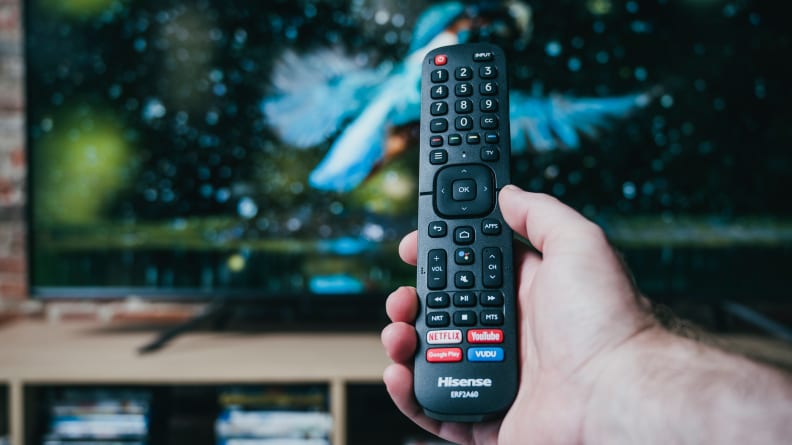
The remote control is chunky and largely uninteresting, but it does offer voice recognition.
In addition to Google Assistant and Alexa support, the H8G features an Android-based smart platform. It's not our favorite smart platform on the market today (that honor goes to Roku), but it's flexible and supports a ton of apps.
The TV’s remote control is about as basic as they come, but it does feature a built-in microphone for voice commands via Google Assistant.
Performance Data
Before testing each TV, we make sure the panel is on and receiving a continuous signal for at least 24 hours, allowing the pixels plenty of time to warm up. Our 65-inch H8G received this standard warm-up time before any readings were taken.
For SDR tests, we used Hisense’s "Theater Day" picture setting. For HDR tests, we used Hisense’s "HDR Theater" picture setting. We’ve chosen these settings because of their accuracy, but results may vary across picture modes.
We use a standard ANSI checkerboard pattern for most of our basic contrast tests—including the ones reported below—but we also use white and black windows ranging from 2% to 90% to test how well the contrast holds up while displaying varying degrees of brightness.
I'll expand on our test results throughout the review, but for now, here are some key takeaways:
• HDR contrast (brightness/black level): 613.6 nits/0.092 nits (ANSI checkerboard) • SDR contrast (brightness/black level): 536.8 nits/0.124 nits (ANSI checkerboard) • HDR peak brightness: 935.1 nits (50% white window) • HDR color gamut coverage: 95% (DCI-P3/10-bit) • SDR color gamut coverage: 98% (Rec.709)
Connectivity
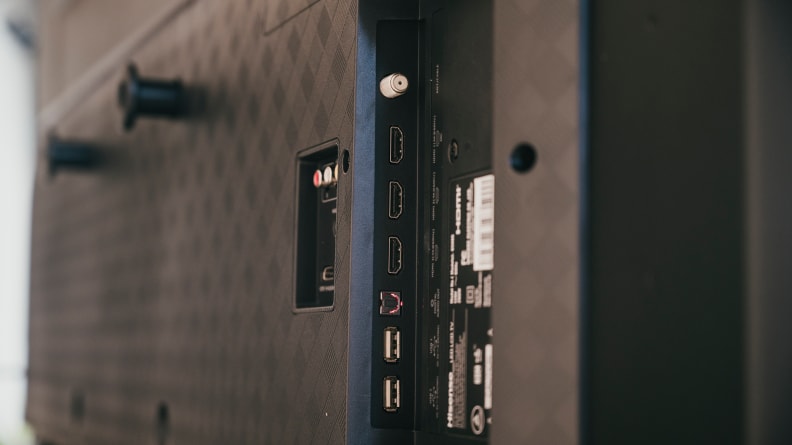
No HDMI 2.1 here! These are all HDMI 2.0 ports.
The Hisense H8G offers a basic suite of inputs that will get the job done in most cases, but those shopping for sought-after features like HDMI 2.1 or eARC will be disappointed to learn that these features are absent. I'll go into detail about those features soon, but for now, here's what you'll find on the back of the H8G's panel:
• 4x HDMI 2.0 ports • 2x USB 2.0 port • Composite input • LAN ethernet port, RF input, optical audio output, 3.5mm audio output
What We Like
Great color and formidable brightness
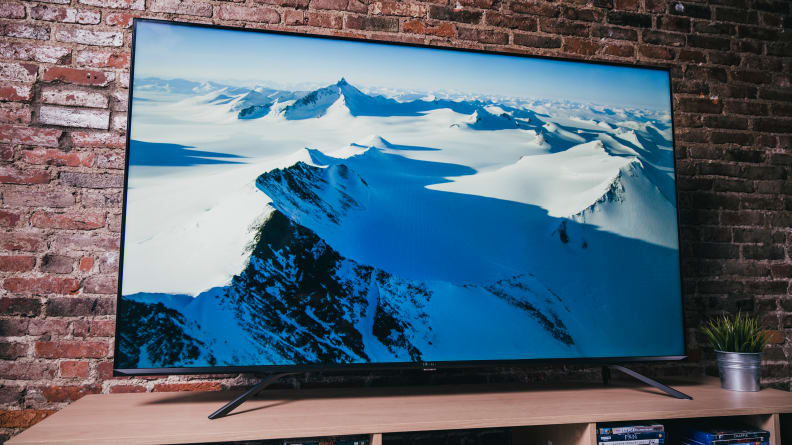
The H8G covers about 95% of the wide DCI-P3 color gamut. Thanks, quantum dots!
The Hisense H8G is a quantum dot TV. Often referred to as “QLED,” being a quantum dot TV means the display panel is outfitted with microscopic dots designed to enhance brightness and color. In recent years, quantum dots have trickled down from the top-tier price bracket into the mid-range TVs market. In other words, what used to be a premium feature is now becoming commonplace in a more affordable price bracket.
In terms of sheer performance, the H8G takes advantage of quantum dots more than most of the mid-range QLED offerings we’ve seen recently. First, let’s talk about color. The H8G covers about 98% of the Rec.709 standard, which still accounts for most available content. This is about as good a figure as you can hope for when it comes to a TV in this price range. The TV’s quantum dots also provide a boost when measuring the wide color gamut, which accounts for newly mastered HDR content. It covers about 95% of the DCI-P3 color gamut, which is also an excellent figure for this price bracket.
Our lab tests also reveal that the H8G is capable of stellar brightness during both SDR and HDR content. In SDR—common for most streaming content, cable TV, and HD Blu-rays—the H8G routinely climbed into the 550- to 600-nit range. In HDR, the H8G is even brighter, at one point cracking the 900-nit mark in our lab. Although these tests are designed to measure peak performance (the 900-nit measurement was taken while the TV was displaying a static white window, for example), these figures are nevertheless revealing as a means of comparison.
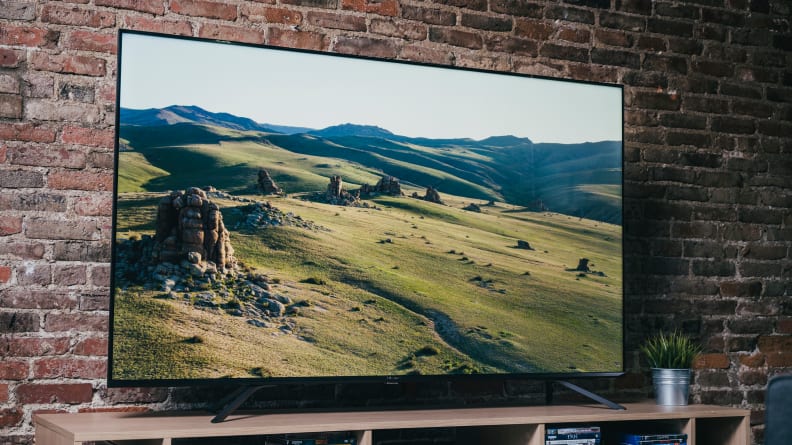
In both SDR and HDR, the H8G gets impressively bright.
Compare these figures to those of the 2020 TCL 5-Series. The 5-Series—while admittedly less expensive than the H8G—is also a mid-range QLED TV, but its peak brightness only tops out at around 400-450 nits. The TCL 5-Series’ color production isn’t as impressive as the H8G’s, either, as it only covers about 91% of the wide color gamut.
Another H8G rival, the Samsung Q60T QLED, also falls short when standing toe-to-toe with the H8G, and the Q60T is currently priced higher. The H8G is simply a fantastic option for the folks shopping for a quantum-dot-enhanced TV first and foremost while still maximizing their dollar.
Unobtrusive (albeit familiar) design
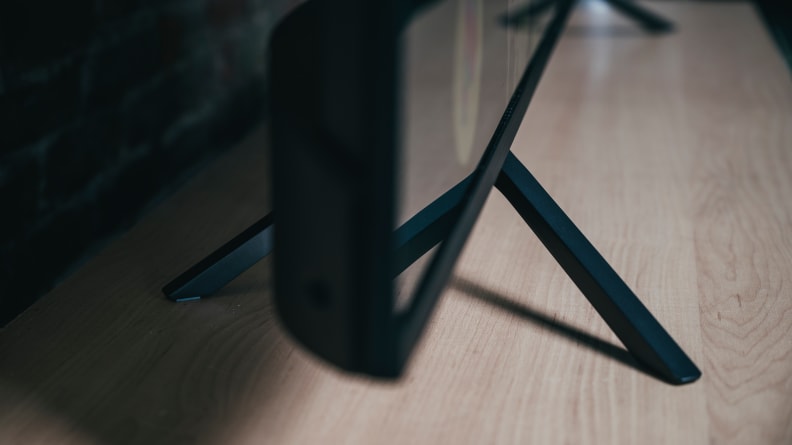
The H8G's design might not turn any heads, but its stand system conveniently features two setup options.
When we reviewed the Hisense H9G earlier this year, we noted that the TV’s peculiar, butterfly-shaped stand was a refreshing design element but not an approach that would suit everyone’s taste. The H8G, on the other hand plays it safe; its panel is outfitted with the angular, boomerang-shaped feet we’ve come to expect from most contemporary LED TVs.
While we’ve lamented the homogenization of modern TV design in recent years (particularly when it comes to entry-level and mid-range TVs), the H8G’s overall design is tried and true. The distance between the H8G’s wide-set feet allow for soundbars or other equipment to live below the panel. Additionally, if you’re hoping to plant the TV on a narrow table or TV stand, the H8G offers secondary slots for its feet closer to the center of the panel.
Is it unique or exciting? Not really! But I imagine that most folks who are shopping for a reliable mid-range TV will find nothing to complain about when it comes to the H8G’s overall look and feel. The materials are sturdy and the stand placement is adjustable.
What We Don’t Like
Missing key features like eARC, VRR, and ALLM
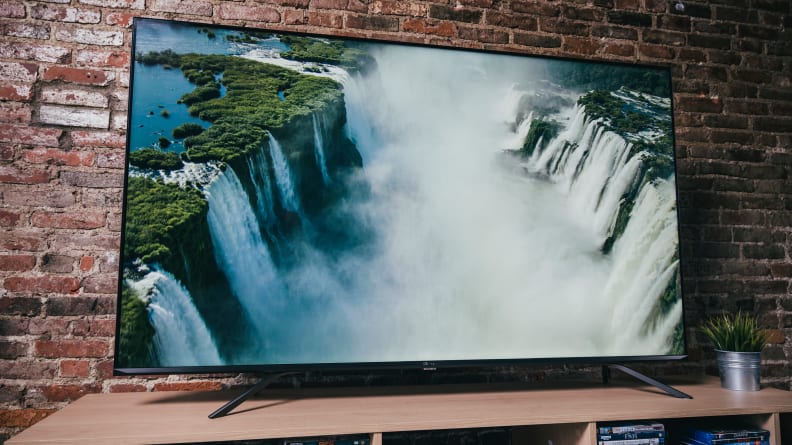
The H8G's native refresh rate of 60 Hz puts it at a disadvantage when compared to the similarly priced TCL 6-Series.
Although the H8G produces a bright, colorful picture worthy of movie night, there are some key missing features that put it at a disadvantage when compared to its direct competition. First of all, the H8G doesn’t offer eARC support, so Dolby Atmos passthrough via HDMI is limited to compressed audio only (as are all audio signals) over Dolby Digital+. This may not be a major issue for most people now, but as more audio devices utilize eARC for higher quality audio—as well as the ability to fix any sync issues between the TV and the audio device—they will leave the H8G behind.
Second, the H8G is missing some important gaming-centric features like Variable Refresh Rate (VRR) and Auto Low Latency Mode (ALLM), as well. It’s not all that surprising given the relative newness of such features on mid-range TVs, but their absence does put the H8G at a sharp disadvantage when compared to its main rival, the TCL 6-Series. Games will still look great on the H8G, but without VRR support, gamers might experience screen-tearing. Without ALLM, H8G users will have to switch their inputs into the TV’s game mode manually.
The H8G also features a native refresh rate of only 60 Hz—another shortcoming when compared to the mid-range and upper-mid-range TVs that offer a refresh rate of 120 Hz, like the aforementioned TCL 6-Series. The H8G’s higher-end sibling, the Hisense H9G, does feature a native refresh rate of 120 Hz, but curiously, it also doesn’t feature eARC, VRR or ALLM.
Relatively shallow black levels
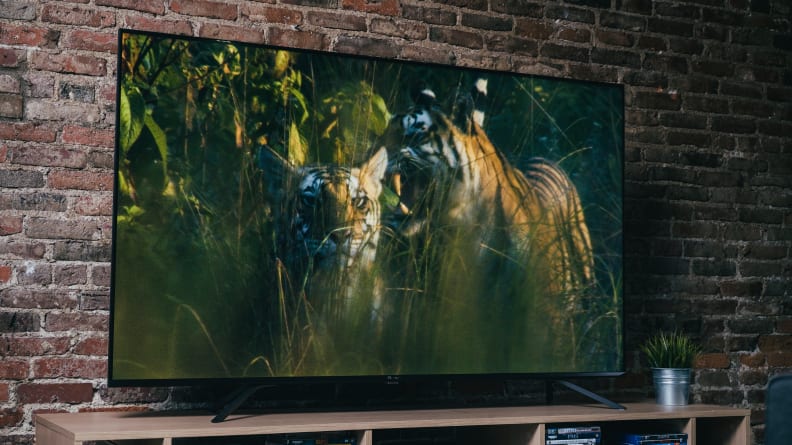
The H8G's black levels aren't particularly bad, but they're shallower than we expected given the TV's hardware.
Although the H8G’s sensational brightness is fantastic for a TV in this price range, the picture never quite gets dark enough to reveal rich shadow detail during darker scenes.
In both SDR and HDR, the H8G’s black levels hover at around 0.90 nits. It improves considerably when there aren’t too many bright elements in the picture (a result of the TVs local dimming capabilities), but during most scenes, it doesn’t get as dark as most of its mid-range cohorts.
I suspect that casual viewers will hardly notice the H8G’s middling black levels, especially given the fact that they’re offset by brighter-than-average highlights. Still, for a TV in this price range with a VA-style panel, we expect better results here.
Should You Buy It?
Maybe—just be sure to weigh the alternatives first
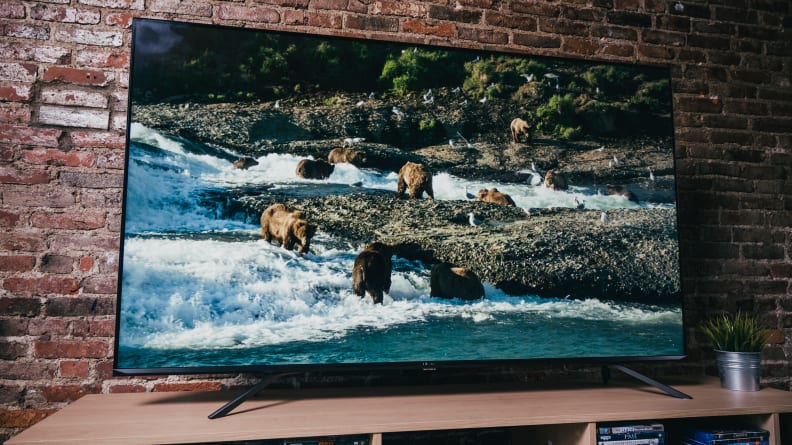
The Hisense H8G is a great option for folks who want to spend less on a 65- or 75-inch TV, but overall it struggles to make a case for itself amidst fierce competition.
Here’s a conclusion I didn’t expect to arrive at: Given the difference in cost between the Hisense H8G and the Hisense H9G (the company’s flagship model for 2020) I find it hard to imagine choosing the H9G over the H8G. This says great things about the H8G and some not-so-great things about the H9G, the latter of which is priced significantly higher and still leaves off most of the same features not included with the H8G (namely, VRR, ALLM, and eARC).
That said, I don’t believe that the H8G is a better option than the 2020 TCL 6-Series, which offers similar quantum-dot-powered performance and most of the features you won’t find in the Hisense H8G. Plus, the 6-Series features a native refresh rate of 120 Hz and also comes equipped with a fully-fledged Roku smart platform (our favorite smart platform) built right in.
At the time of publication, the 65-inch TCL 6-Series is about $100 to $150 more expensive than the 65-inch Hisense H8G, but I firmly believe that the 6-Series’ 120 Hz refresh rate, its gaming-friendly features, and its Roku functionality more than makes up for the increase in cost—especially if you’re looking for a new gaming TV to go along with an Xbox Series X or a PlayStation 5.
The Hisense H8G is by no means a bad TV—it’s actually quite good, especially if you're looking for a great deal on a big 65- or 75-inch screen. Unfortunately, given the state of the TV market in 2020, it just can't carve out a niche of its own.
Meet the testers
Michael Desjardin graduated from Emerson College after having studied media production and screenwriting. He specializes in tech for Reviewed, but also loves film criticism, weird ambient music, cooking, and food in general.
Julia is the Senior Scientist at Reviewed, which means that she oversees (and continually updates) the testing of products in Reviewed's core categories such as televisions, washing machines, refrigerators, and more. She also determines the testing methods and standards for Reviewed's "The Best Right Now" articles.
Checking our work.
Our team is here to help you buy the best stuff and love what you own. Our writers, editors, and experts obsess over the products we cover to make sure you're confident and satisfied. Have a different opinion about something we recommend? Email us and we'll compare notes.
Shoot us an email